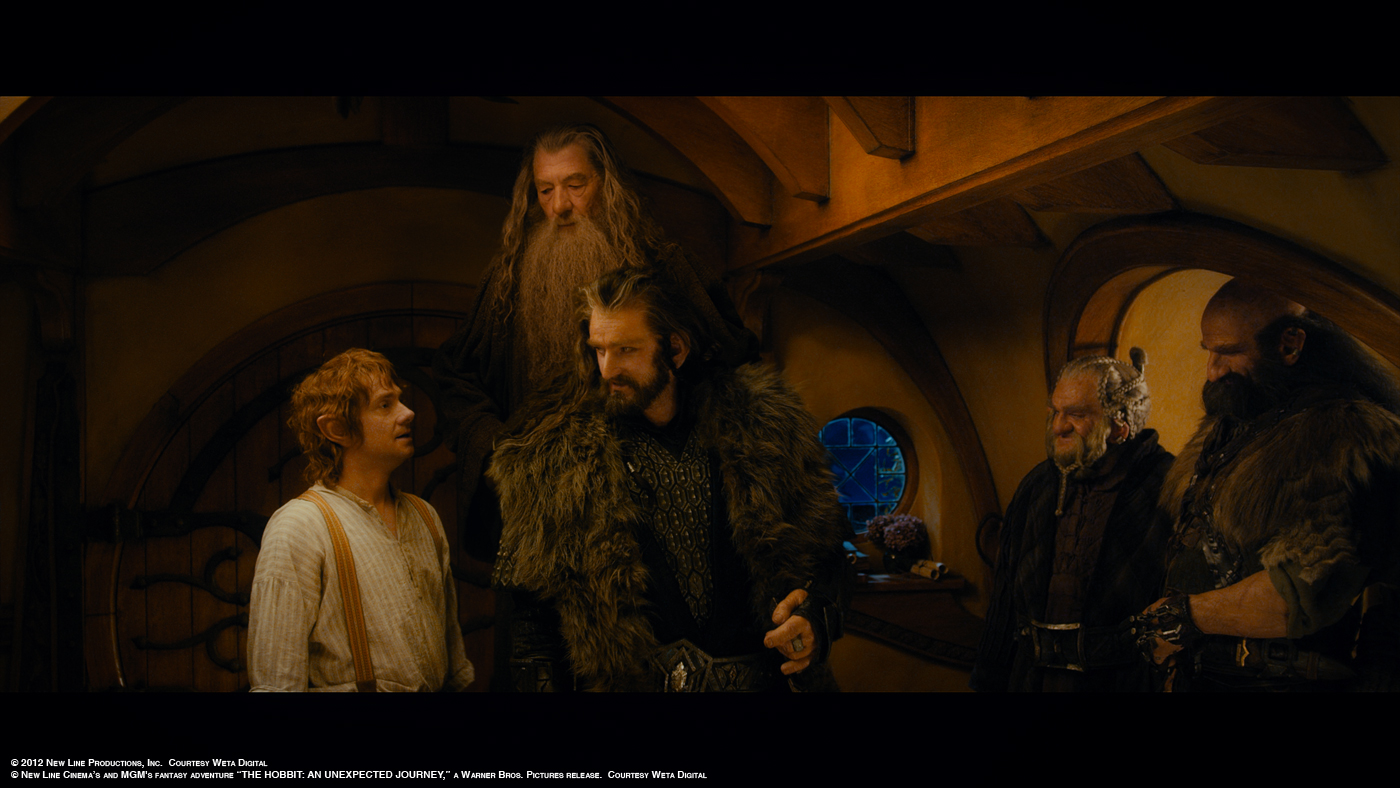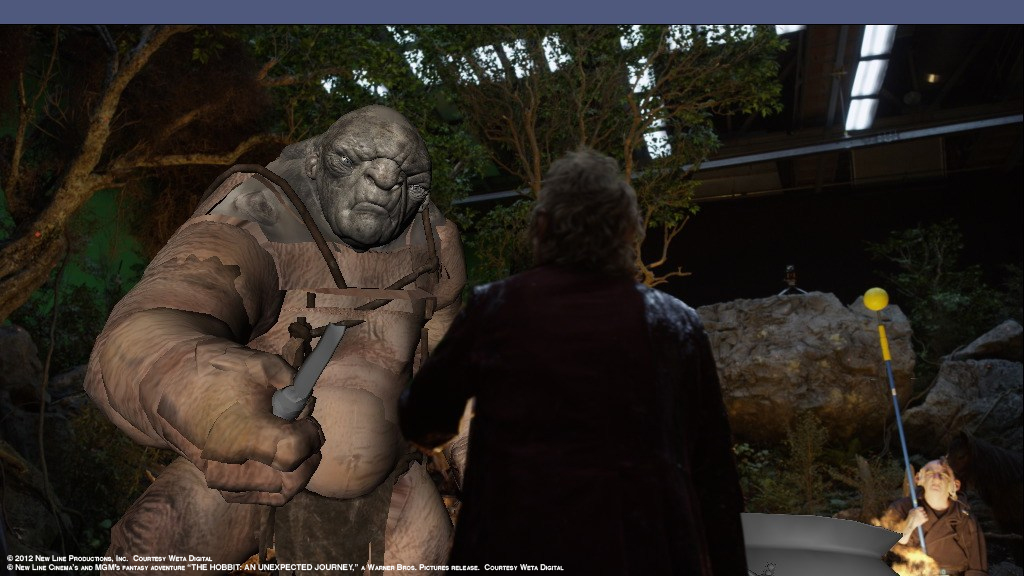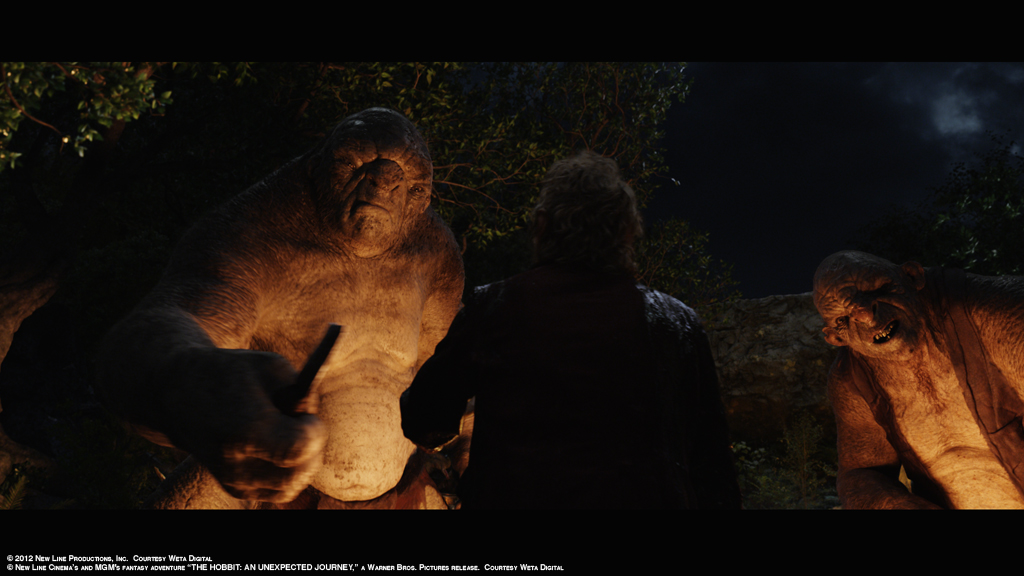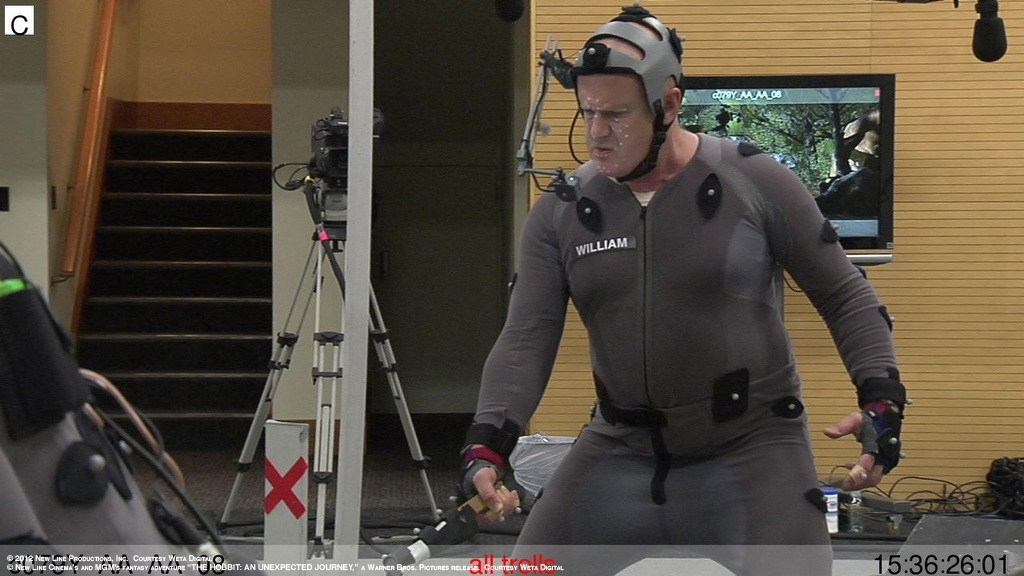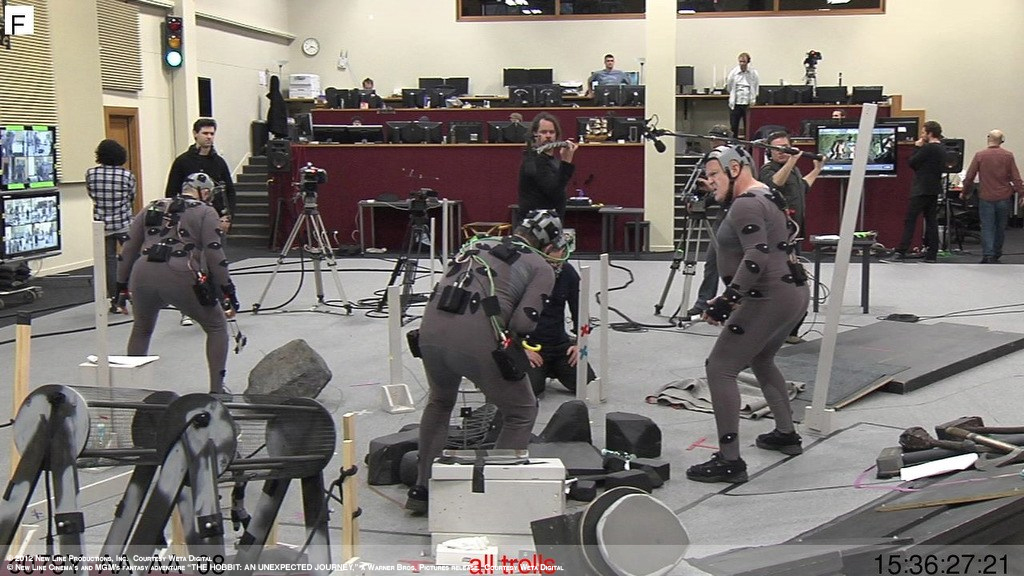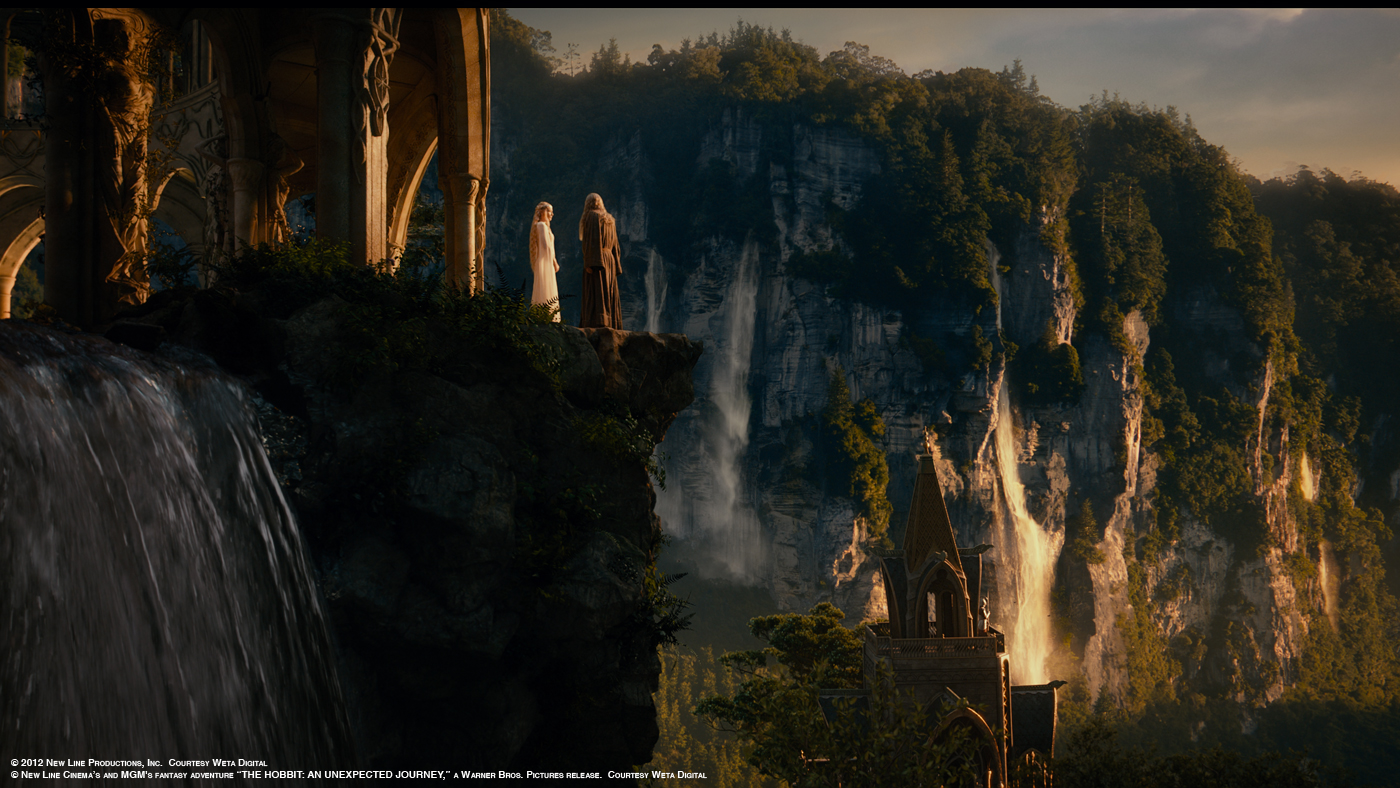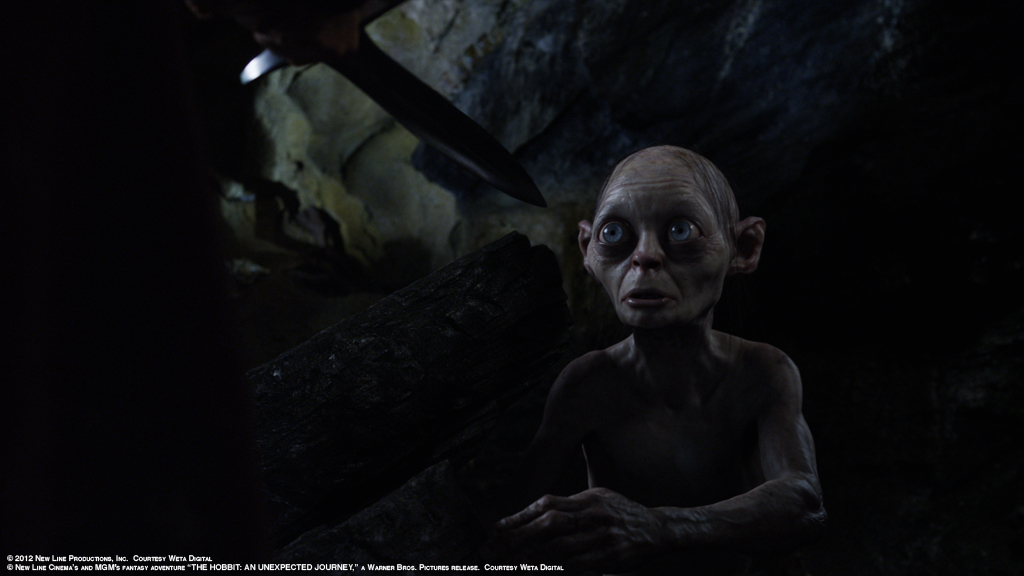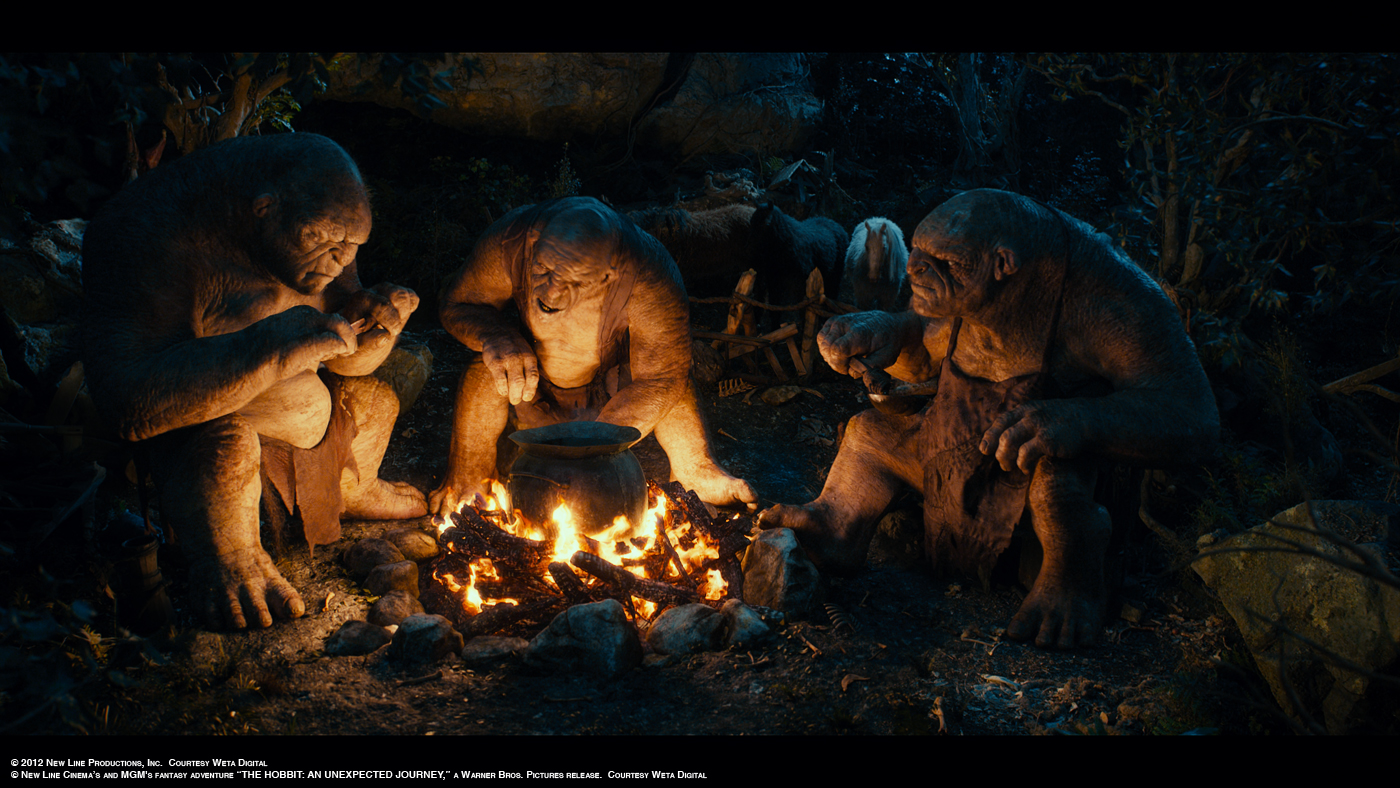Eric Saindon began working in visual effects at Santa Barbara Studios on STAR TREK INSURRECTION and SUPERNOVA. In 2000, he joined Weta Digital to work on the LORD OF THE RINGS trilogy. Then he worked on projects such as I ROBOT, KING KONG or AVATAR.
What is your background?
I got my degree in Architecture at Washington State University and then went on to work at Alias/Wavefront in Santa Barbara, California. In 1999, I got a call from a VFX producer wanting me to come work in New Zealand for a director I knew little about that made BAD TASTE. I jumped at the opportunity and am still in NZ.
It’s your 6th collaboration with director Peter Jackson. Can you tell us more about your collaboration with him?
Peter is a great director to work with because he understands visual effects. Its always good to work with a director that understands why shooting a clean plate or taking extra time to move around green screens can big a big difference to the final image.
What was your approach on this new Tolkien based movie?
We wanted to make sure HOBBIT felt the same as all the LOTR movies. The movies needed to be watched with the LOTR trilogy and not look like they were done 10 years apart.
How did you manage the size challenge of Gandalf and Biblo in his house?
On LOTR we were able to use false perspective to make Gandalf larger than the hobbits. Since HOBBIT was shot in 3d we could not get away with our old tricks. So for HOBBIT we setup a system using 2 different sets and cameras. One set was the full live action set scaled up to 33% in which the dwarves acted and Peter controlled the camera. Adjacent to this was a green set at normal scale in which Gandalf acted on his own with led lights for eye lines of all the other actors. The camera on this set was driven with a kuper motion control unit and a real time extraction was done and composited back onto Peters screen to allow him to see a version of the final comp.
This new movie features really huge environments. Can you tell us more about their creations?
One of the biggest challenges for HOBBIT has been the scale of the set extensions. The size of the environments that Peter envisioned for this movie is vast. There really would have been no way to build a set that would have encompassed the concept from John Howe and Alan Lee. Going to CG extensions allows Peter to bring to life parts of Middle Earth we have never seen before. All of our extensions were designed by John and Alan. We were lucky enough to have the 2 of them working at Weta hand in hand with the artists building the sets. Building on our technology from AVATAR we wrote a few new systems to help with all the extensions including a new plant and tree generating software called Lumberjack.
Can you tell us more about the previz process especially for the huge sequence of the Goblin cavern?
Since LOTR, Peter has always used previz to help develop his movies. Christian Rivers and the previs team worked on most every sequence in the HOBBIT trying to Peters vision into animatic form. Daily meetings and reviews allowed Christian to push lots of ideas by Peter and gave Peter the ability to refine every sequence.
At a moment, the heroes faced three trolls. How did you created these huge creatures?
The trolls were designed using elements from the original troll designs from LOTR and from the stone trolls that were briefly in FELLOWSHIP OF THE RING. The creatures themselves were driven by a combination of motion capture and keyframe animation and they were all setup with individual muscle rigs.
How was simulated their presence on-set?
Onset we setup a small mocap volume adjacent to the live action set. The actors playing the trolls performed on this volume and a real-time composite of the trolls was fed back to the live action cameras so Pete could frame the shots with the full size trolls and actors.
Can you tell us more about Azog?
Azog was played by Manu Bennett and was completely captured on the mocap stage. Manu’s very physical performance brought the white orcs character to life. Like all the creatures in HOBBIT, Azog was created using a full muscle system and simulated fat and skin layers. A deep subsurface look to the skin allowed Azog to look real but give him the white skin.
Can you tell us more about the Rivendell creation?
Rivendell was based on the miniature that was created for LOTR. Since Hobbit takes place quite a few years ahead of LOTR we did work with Alan Lee to bring Rivendell to more of its “hayday” as Peter always put it.
During their trip, the heroes find themselves in the middle of a Rock Giants battle. How did you create these giants and faced the animation challenge?
The stone giant sequence was envisioned in the previs department under the supervision of Christian Rivers. Working with Peter, Christian and his team created the sequence and the camera moves. Once Peter was happy with the sequence animation supervisor Dave Clayton and his team added the detailed animation to give the giants the scale they needed.
Gollum is really impressive. Can you tell us more about the improvement you made on it since THE RETURN OF THE KING?
We wanted Gollum to be the same character as LOTR but also wanted to add in all our new technology. The biggest improvement Gollum is that our mocap system captures so much more detail that Andy Serkis’s performance is all pushed into the character. On Rings we never captured facial for Gollum, the only thing we did was video capture of Andy’s face and then animators would keyframe the performance. For HOBBIT we used a improved version of our facial capture system from AVATAR to push all of Andy into Gollum. The other improvements were mainly technical.
The original Gollum model was around 5,000 polygons and the average texture map size was around 2k. Our new model was closer to 1 million polygons and the average texture map was around 8k. The other big advance is our muscle system. Using our new tissue system we are able to simulate all the muscles in Gollum’s body and face. This advance allows us to create much more realistic skin movement.
How did you design the effect when Biblo put the ring?
Since Sauron is not yet back in the world the effect in ring world is meant to be a similar but much less violent world from that of LOTR.
How did you manage the 48 fps aspect and what were the main challenges about it?
The only big challenge for 48 fps is the amount of data. We also changed from the standard 2k image resolution to 4k. The 4k is an obvious change because there is 4 times the information in a frame from the typical 2k image. The 48 fps challenge comes from the fact that there is half the motion blur from a 24fps image. What this meant to our team is that our pre-production assets had to be built textured and shaded to a much higher resolution. The unexpected advantage of 48 fps was that we had twice as many frames to add detail into the animation. This allowed us to add allot more subtle detail into things like Gollum’s facial performance.
What was the biggest challenge on this project and how did you achieve it?
Since the movie is in stereo we can no longer get away with shooting elements and putting them on cards. So one of the big challenges of this movie has been setting up a good volumetric pipeline for elements like fire, smoke and water. To tackle this problem we ended up writing our own simulation framework called Synapse.
Was there a shot or a sequence that prevented you from sleep?
Almost every sequence caused me a little sleep loss, but the very last shot in the film probably caused the most. We got shot with not a whole lot of time left and we didn’t finish it until about 4 hours before the first press screening.
What was your feeling to be back in Middle Earth?
After a 10 year absence from Middle Earth and all its wonderful characters it was great to be back in the world that first brought me to New Zealand.
What do you keep from this experience?
The most memorable part of the experience for me was flying to the most remote parts of New Zealand and working with such a talented crew.
How long have you worked on this film?
I started on THE HOBBIT directly after finishing AVATAR, so about 3 years. That includes the one and a half years of filming all over New Zealand.
How many shots have you done?
We completed about 2200 shots for Film 1.
What was the size of your team and what is your next project?
At the peak of production we reached 850 artists working on HOBBIT, spanning 5 different buildings and using around 10,000 processors.
What are the four movies that gave you the passion for cinema?
THE SHAWSHANK REDEMPTION, STAR WARS, JURASSIC PARK and THE LION KING.
A big thanks for your time.
// WANT TO KNOW MORE ?
– Weta Digital: Official website of Weta Digital.
// THE HOBBIT: AN UNEXPECTED JOURNEY – MAKING OF – WETA DIGITAL
© Vincent Frei – The Art of VFX – 2013


